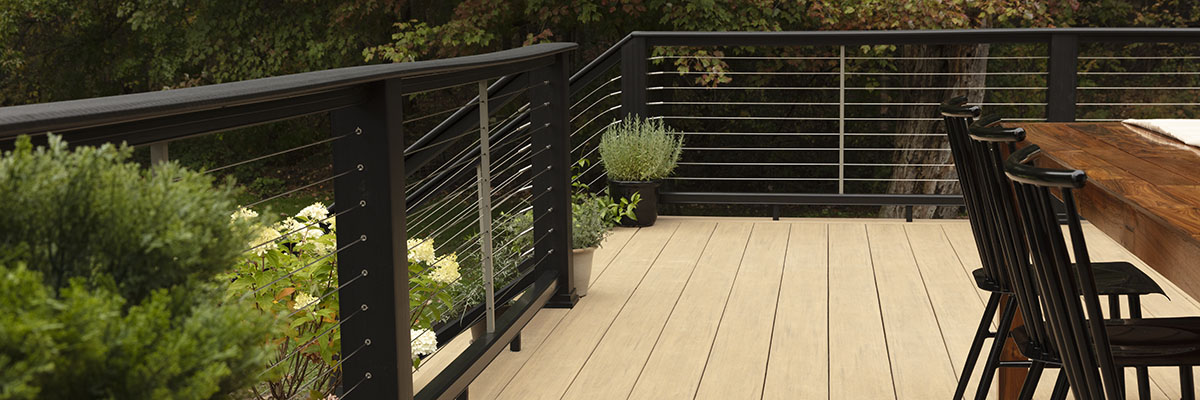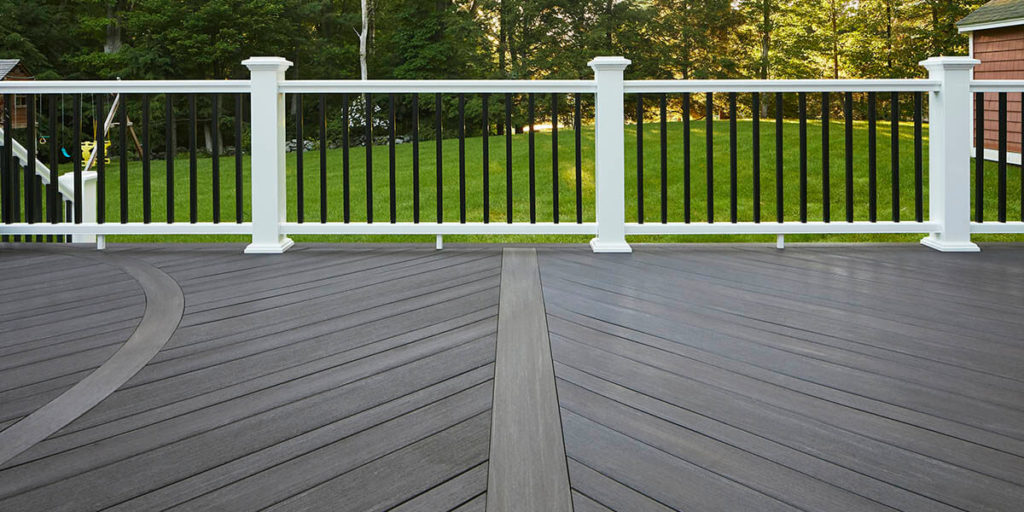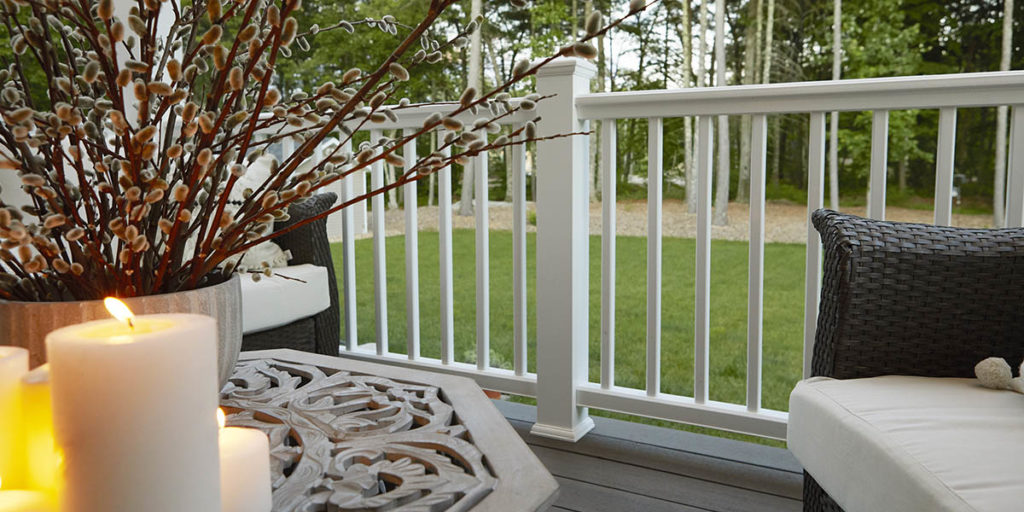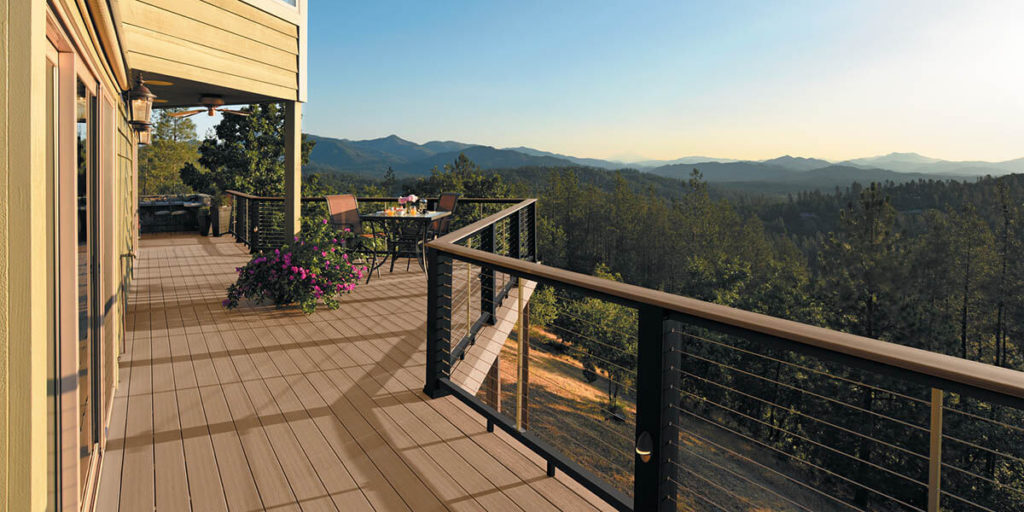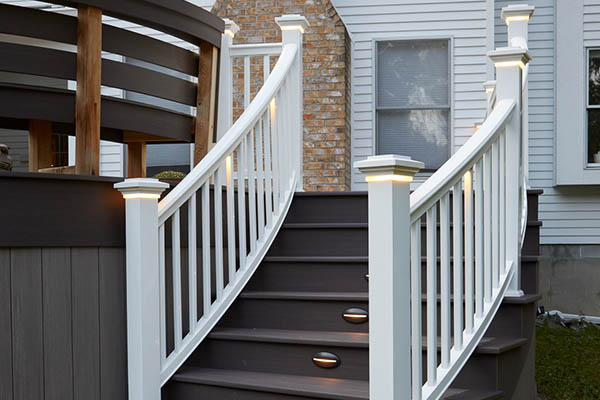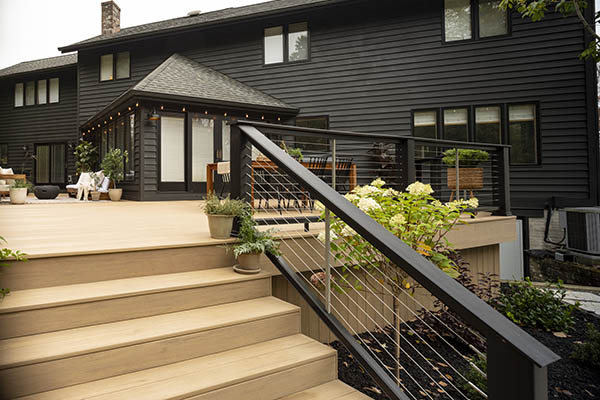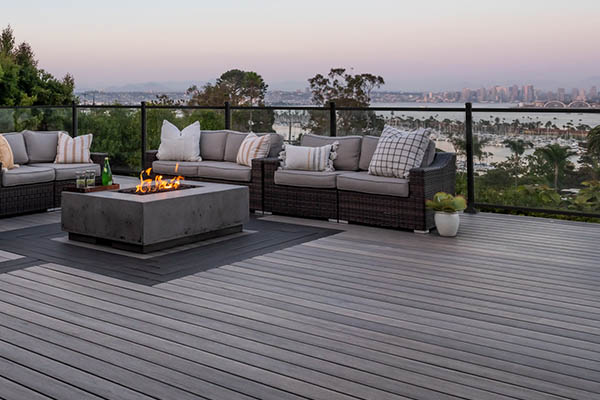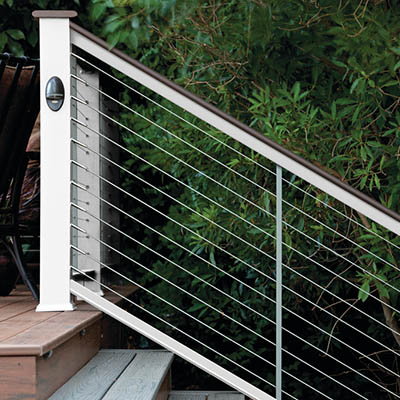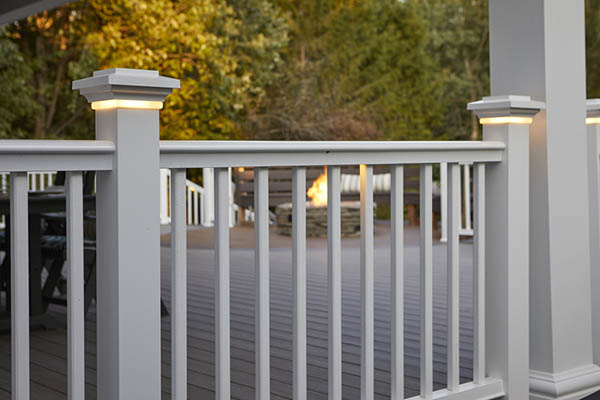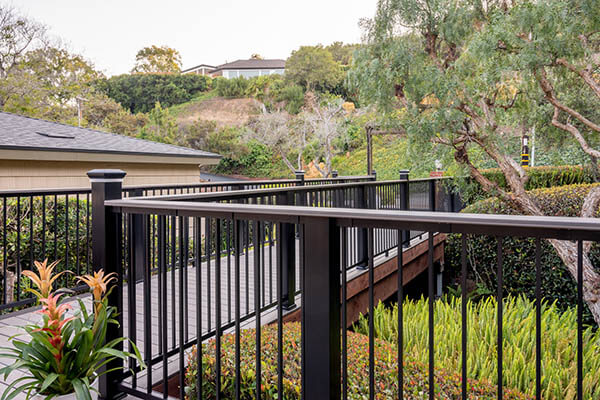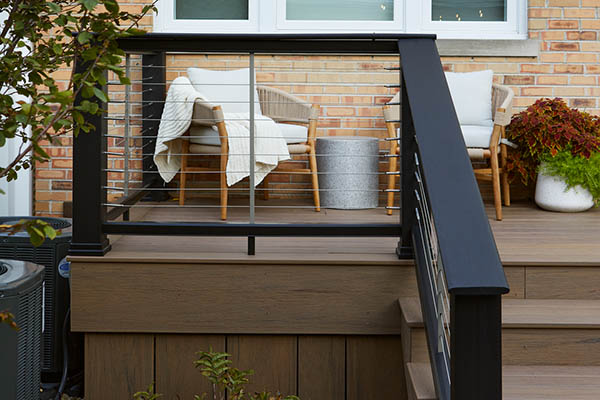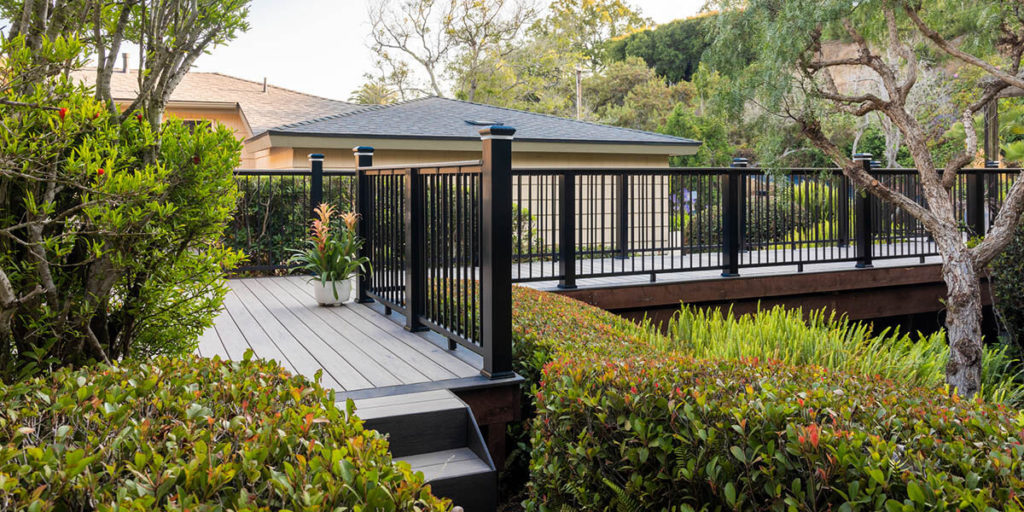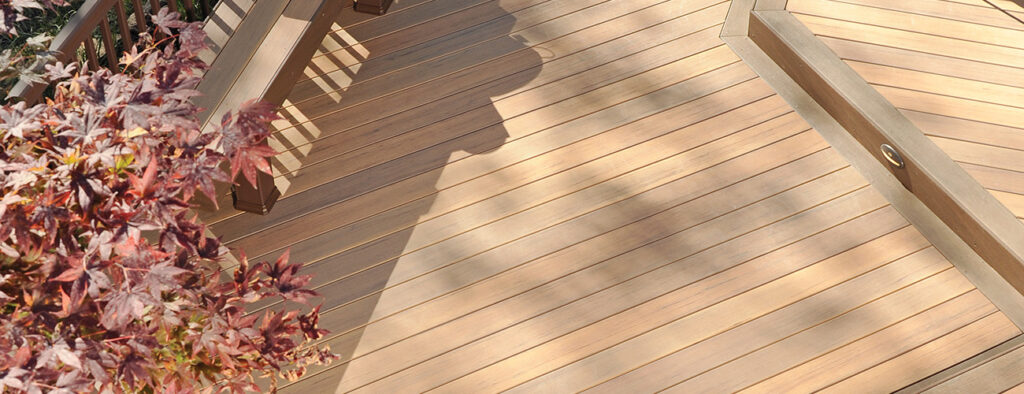If you’re interested in a DIY deck railing, you value having control over the material choices that make up your railing system — and the design aesthetic your choices produce. You know a railing isn’t just a safety feature; it’s the final polish piece of your outdoor living space.
MOST CURIOUS ABOUT INSTALLATION?
Read up on best practices for installing your own DIY deck railing. LEARN MORE
To create your custom deck railing design, follow these steps.
Step 1: Get Familiar With Railing Systems & Material Types
A railing system is actually a combination of several components. And those components can be made of different materials.
First, learn what all the different components of a railing are so you can customize like a pro.
Then, discover your railing material choices from the TimberTech Railing portfolio.
Our portfolio is categorized by two main railing types: composite and aluminum. Both of these rail system categories also feature multiple infill materials for optimal customization. NOTE: When it comes to deck railing materials, you’ll want to consider all the components of your railing — with “composite” or “aluminum” as useful starting points.
Deck Railing Components

- Top rail – The uppermost piece of the railing that runs between posts and connects to the top of the infill.
- Bottom rail – The lower piece of the railing that runs parallel to the top rail between posts and connects to the bottom of the infill.
- Infill – The piece that fits between the top and bottom rail, filling the inner portion of the rail.
- Post – The vertical piece that connects each railing panel and secures the railing to the deck surface. Composite railings feature a post sleeve that covers a wood post, while aluminum railings feature a full aluminum post.
- Post cap – The top piece of the post that often features a design and can include lighting.
- Post skirt – A detail piece that covers the bottom of the post, where it connects to the deck surface.
TimberTech Deck Railing Materials
The TimberTech Railing portfolio is categorized by two different top railing material types: composite and aluminum.
Know that composite and aluminum aren’t the only materials that can make up your DIY deck railing. Based on your top rail choice, you’ll also be able to incorporate other materials, such as stainless steel cable and glass, in your infill (which you’ll learn about in Step 3).
Composite Railing
Composite railing is made of a mix of recycled wood fibers and post-consumer polymers.
Why Choose Composite
✓ Designed to mimic the look of real wood, without the drawbacks (think staining, sealing, etc.).
✓ Attractive customization options to make the design yours.
✓ High-performance, low-maintenance that’s fade-resistant for lasting beauty with minimal effort.
Aluminum Railing
Aluminum railing features powder coating and is designed to be both lightweight and durable.
Why Choose Aluminum
✓ Features an attractive wrought-iron-inspired look, without the same risk for rust and corrosion.
✓ Multiple top rail and infill options for a unique look that’s all you.
✓ Easy installation options when you choose a panelized railing system like Impression Rail Express®.
WHY NO WOOD?
Find out why wood is no good — for decking and railing alike. LEARN MORE
Step 2: Determine Your Design Aesthetic
Now that you know the two main railing categories to choose from, the next step for customizing your DIY deck railing is to think through your preferred design aesthetic. Thinking through your aesthetic style now will help you choose the right top rail profile and compatible infill option to create your custom look.
What to Ask to Find Your Style
Not sure what aesthetic is best for your DIY deck railing design? Here are some questions to ask yourself to determine your aesthetic style:
- What is the architectural style and color story of your existing home? Which decking and railing combinations will best complement them?
- Are you looking to keep your views unobstructed with something minimal or make a bold style statement?
- Which railing profile do you prefer: classic millwork, modern and polished, or clean and minimalist? (See below)
- What color is your home’s trim? Many design-forward homeowners like to match their trim and railing for a cohesive look.
With these questions in mind, take a look at some curated railing designs to gather more inspiration for your DIY deck railing.
Step 3: Explore Your Infill Options
The next step to realizing your DIY deck railing is deciding on an infill, or the portion of the railing that runs between the top and bottom rails. Your infill material and color options will depend on the top rail profile you’ve selected.
REMEMBER
The infill is just as important as the top and bottom rails in creating the overall look and feel you desire.
Infill Options
EXPLORE ALL YOUR CUSTOMIZATION OPTIONS
Learn how to mix and match your railing materials for a unique perimeter. EXPLORE DECK RAILING MATERIALS
Step 4: Get Familiar With DIY Deck Railing Best Practices
With all your customization options locked in, you’re ready to think through DIY deck railing installation best practices. The complexity of DIY-ing your deck railing will depend on the railing and infill options you choose.
As an essential safety feature, railings have specific code requirements you’ll need to follow for a code-compliant installation. Always be sure to check with your local building codes department to determine the requirements specific to your area.
RATHER WORK WITH A PROFESSIONAL?
Leave installation up to the pros by partnering with a TimberTech-registered contractor. FIND A CONTRACTOR
If you’re committed to a DIY deck railing installation, your railing will need to meet the following requirements:
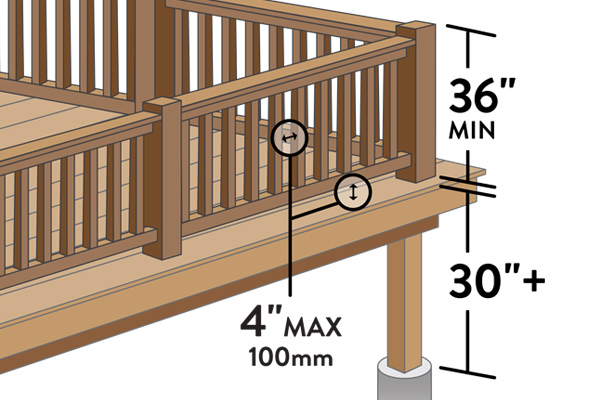
Basic Requirements for Railing Installation
Railing guardrail height: at least 36” above the deck surface. In some applications, such as residential decks in California, the height needs to be 42”.*
Space between balusters: Typically no more than 4”.
Space between bottom rail and deck surface: typically no more than 4”, but can be no more than 2” in certain applications.*
*Always check with your local building codes department before installing your railing.
Keep in mind that a railing is required on decks that are 30” above ground level. However, even on lower decks, a railing can improve your deck’s safety as well as add a design element for a polished outdoor living space.
LOOKING FOR AN EASY RAILING INSTALLATION?
Opt for Impression Rail Express, which features a panelized metal railing system, with pre-assembled balusters and pre-drilled holes in the rails. LEARN MORE
Step 5: Sample Your High-Style, Low-Maintenance Railing
Now that you know your railing options, it’s time to get a better sense of which is best suited to your DIY deck railing by seeing your options up close and personal.
Explore curated bundles featuring top railing samples paired with complementary TimberTech decking samples and order your favorites for free.

